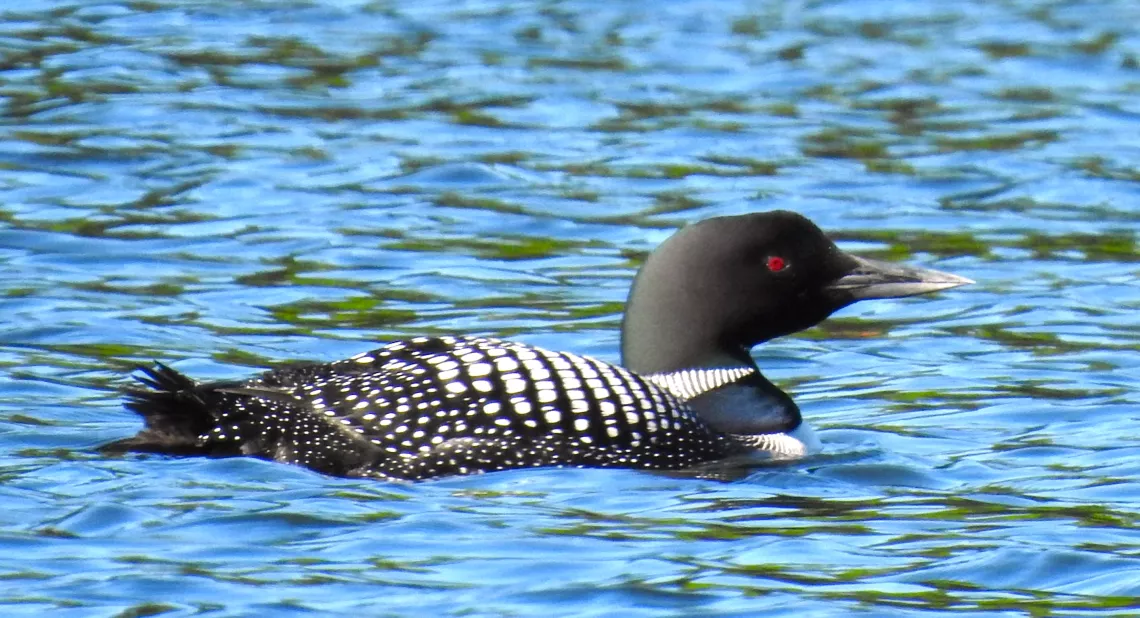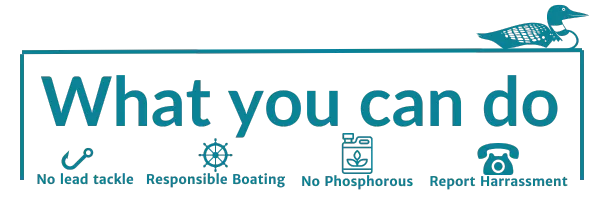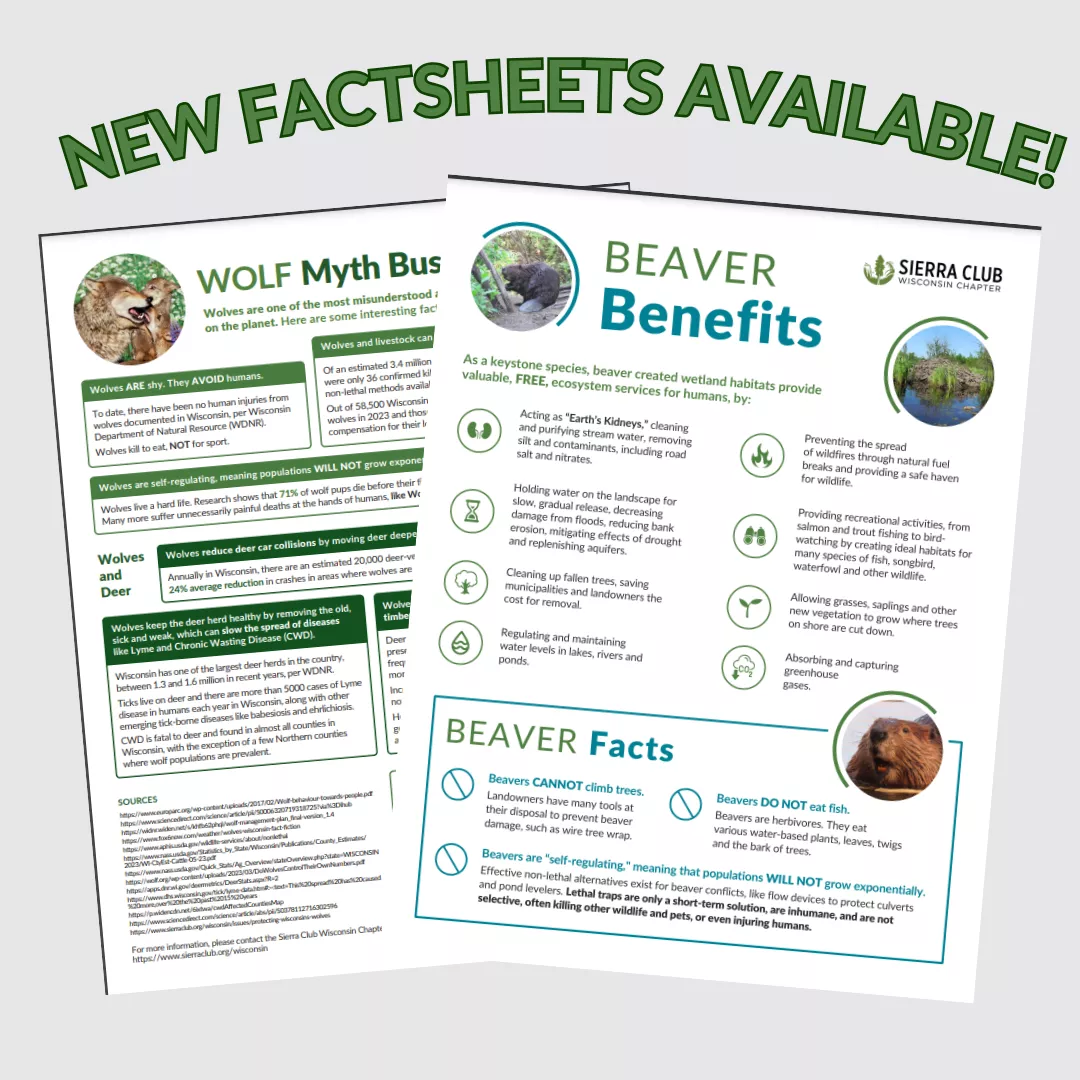
The common loon is a fascinating bird to see and hear on our northern Wisconsin lakes.
It has come to represent the wildness and untamed beauty of the Northwoods. Its haunting call is other-worldly, bringing a sense of tranquility and peace to many who have experienced it.
The loon population is declining in the upper Midwest. According to The Loon Project, the loon population in northern Wisconsin has declined by 22% in the past 25 years, with the population shrinking by as much as 6% each year. If it keeps up at this rate, we will see noticeably fewer loons on northern Wisconsin lakes within the next 5-10 years.
Some of the reasons for this decline may be attributed to:
- Climate-change which has caused warmer temperatures and higher rain events reducing water clarity in lakes making it harder for loons to find food.
- Fertilizer runoff flowing into lakes from lakefront properties.
- Lead poisoning from loons ingesting lead sinkers.
- Habitat loss.
We must protect our loons and their habitat for future generations to enjoy. We encourage you to spread the word about these unique birds, in hopes of averting further decline.

A Loon Factsheet has been created that includes some interesting loon facts and some of the steps that can be taken to protect them. Key takeaways include:
- Do not use lead fishing tackle to prevent unnecessary and avoidable painful deaths.
Switch to non-poisonous alternatives such as tungsten, steel, bismuth, pewter, ceramic or tin. - Be a responsible boater. Never chase loons or run motorboats or personal watercraft over areas where loons have been seen. Loon chicks are so small that they may drown from the wake of watercraft.
- Use only phosphorus-free fertilizers on shorelands, and only if needed.
Maintaining a natural vegetation buffer area protects water quality by slowing and absorbing runoff chemicals before they enter the lake. - Report loon harassment to the Wisconsin Department of Natural Resources at 1-800-TIP-WDNR. Harassing a protected species like the Common Loon carries a $1000 fine and 90 days in jail.
- If you encounter an injured, entangled or beached loon in Wisconsin, call Loon Rescue, Inc: at 715-966-5415 with the location. Loons trailing fishing line often end up with it wrapped tightly around their bodies and bills, preventing them from being able to eat. Entangled loons will weaken and die without help.
How you can help educate others:
- Share the downloadable factsheets with your family, friends and neighbors!
- If you live on a lake, you can share the loon factsheet with your lake association, public boat launches, resorts and bait and tackle shops.
- Provide them to libraries, nature centers and local businesses.
- You can download and print the factsheet for distribution, or you can contact us at wisconsin.chapter@sierraclub.org to have some mailed to you.
Other Factsheets are available

Other wildlife factsheets available are listed below. We encourage you to download and share to spread awareness about some of Wisconsin’s misunderstood species.
- Beaver Factsheet provides information about beaver benefits.
- Wolf Factsheet includes myth buster facts about wolves.